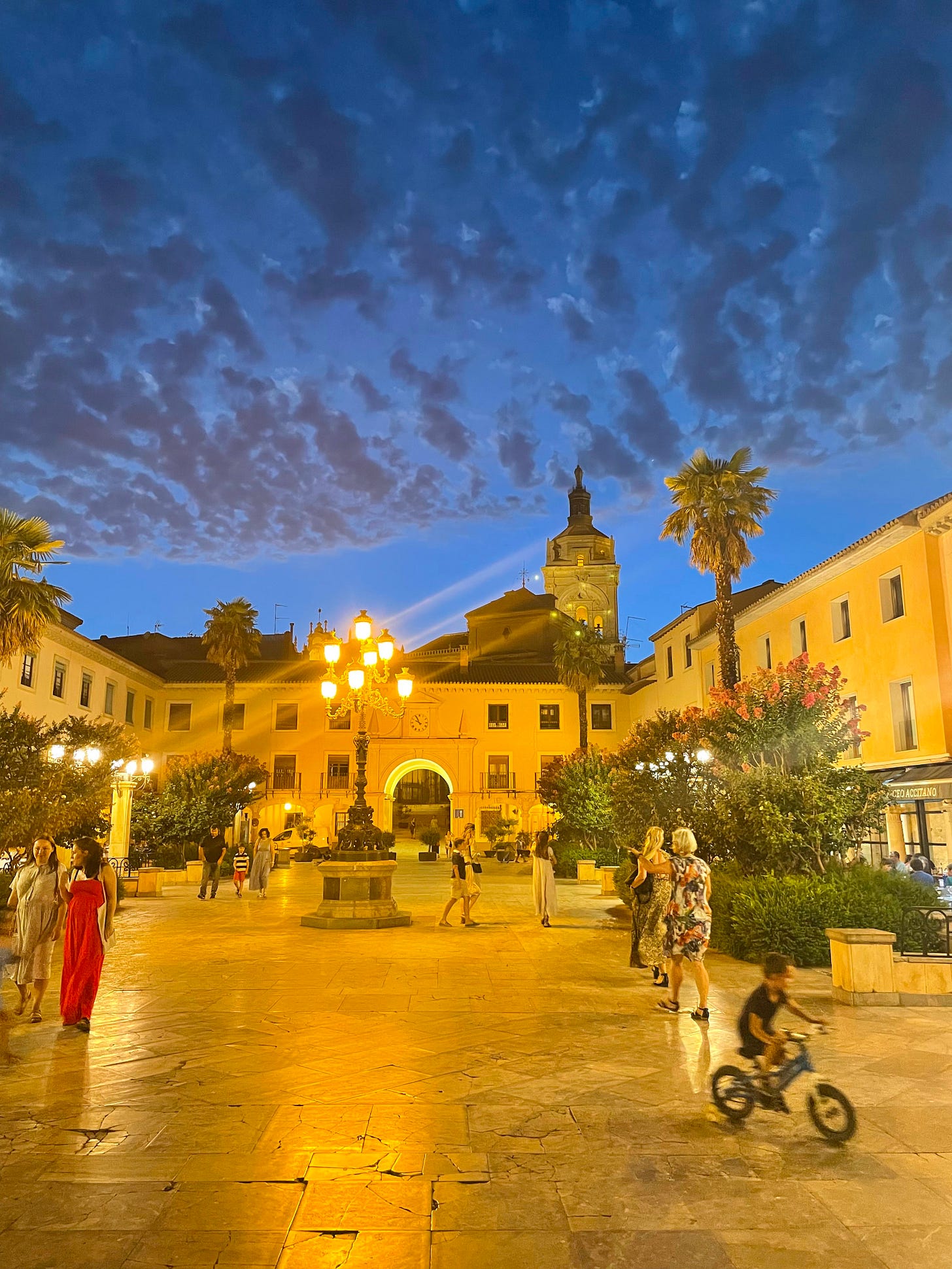Back in the 80s, dozens of my cousins and I would descend on our ancestral town for weeks at a time. We stayed with our grandmothers, scattered across different houses.
My childhood summers didn’t have a clear beginning or end. Most days blurred into each other. Food was no different, my grandmother’s almost burnt toast drizzled with olive oil from a plastic bottle for breakfast, the inevitable lentil stew or arroz a la Cubana (rice, tomato sauce, fried banana and egg) for lunch, and for merienda, pan con chocolate or bocata de chorizo. Dinner was usually a simple filete de pollo o ternera a la plancha.
The days passed languidly. I had few responsibilities: midday, lower the persianas or blinds, which inevitably came crashing down against the window panes with a thundering noise, close the windows, then the shutters. Then, the same routine in reverse come morning: open the shutters, then the windows, lift the persianas, and let in what little cool air there was.
We read books. We played cops and robbers and El Zorro, a game, in which one child plays the fox, and the others try to touch them without being seen or before they turn around.
In the 90s, we’d gather “cinema-style” to watch Melrose Place and eat tiny tocinos de cielo (sweet egg yolk custards) in Tía Ángeles’ grand, chintz-filled salon—the only incongruous note in an otherwise deeply Andalusian summer.
My grandmother was devout and strict. A collection of cartas necrólogicas (printed obituraries) from the funerals she attended was one of her prized possessions. If a kiss appeared on the TV screen, she would leap up and cover the TV with her skirt. She and her tiny sister Ángeles, both long-standing widows, lived together in the winter, in a house overlooking the plaza, but each summer they separated to care for their now adult children and their brood. Still, they were inseparable, always meeting to pray the rosary and attending daily mass carrying their custom-made green velvet-covered kneeling chairs up the steep road to the nearby cathedral.
Even their names, María and Ángeles, sounded like echoes from their pious prayers. One of our greatest fears was being roped into praying the rosary with them at the mesa de camilla. I, for one, was a hopeless case since I went to (gasp) a secular school. José, my friend Kika’s brother, was a master of spinning a rollicking tale out of the experience.
The only whiff of modernity and gastronomical freedom came after the obligatory siesta, when I’d walk to the pastelería or bakery in the plaza for a cold drink. The heat bounced off the streets and climbed the marbled stairs leading up to the square. I’d meet a cousin born within a two-year range of me, one of the “middle cousins.” The older, cooler ones shunned us for years, until age evened things out.
And we’d order leche merengada or granizado de limón. Leche merengada, a summer drink invented in mid-century Spain, is a granita of sweet milk infused with lemon and cinamon and mixed with a soft meringue. The leche made its grand entrance in June and quietly disappeared in September.
It was icy, white, and oddly exotic, yet unmistakably Spanish because of the lemon and cinnamon mix. The meringue floated to the top like a soft crown above the milk, a pale, refreshing contrast to the hot, muggy darkness of la siesta.
Both simple and elegant, leche merengada is a testament to how Spanish cooks and confectioners created beauty from so little. Its flavor is folded into our collective memory, even as the drink itself is quietly vanishing, edged out by flashier beverages. It was also served with iced coffee at the bottom when it became a Blanco y Negro or black and white but we were really not allowed to order that!
Today, leche merengada survives mostly as an ice cream flavor, or as different milk and egg soak in Easter torrijas or Spanish pain perdu. The drink itself, however, is no longer cool.
But for something that brought so much joy to so many for so long: I want to save it.
So here is my recipe, to be made when the days grow hot and the boredom stretches long.
Use pasteurized egg whites, for peace of mind.
Leche Merengada (Meringue Milk)
Ingredients
500 ml whole fresh milk
1 cinnamon stick
1 lemon
80 g sugar (divided)
3 egg whites (or 90 g pasteurized egg whites)
Powdered cinnamon to dust
Wash the lemon thoroughly, especially if it’s waxed. Use a vegetable peeler to remove the zest, avoiding the bitter white pith.
In a saucepan, combine the milk, lemon zest, cinnamon stick, and 40 g of the sugar. Heat gently over medium heat until just about to boil. Don’t let it boil over.
Turn off the heat and let the mixture infuse for about 45 minutes. My grandmother would probably use this time for prayer.
Once cooled, strain the infused milk and pour it into an ice cube tray. Freeze until solid.
While the milk freezes, beat the egg whites in a clean bowl using an electric mixer. Once soft peaks form, gradually add the remaining 40 g of sugar. Continue beating until stiff, glossy peaks form.
Place the frozen milk cubes in a blender and blitz until slushy. Transfer to a large bowl and gently fold in the meringue until well combined.
Spoon into individual glasses and dust the tops with ground cinnamon.








A beautiful recollection of childhood summers & a perfect balance of sweet & savoury!
Hoping for some sort of summer in Ireland, so I’ll make your recipe for the leche merengada.